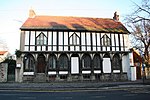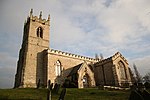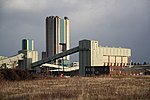Tickhill & Wadworth (ward)
Use British English from May 2022Wards of Doncaster
Tickhill & Wadworth—consisting of Braithwell, Micklebring, Stainton, Tickhill, Wadworth and Woodfield—is one of 21 electoral wards in the Metropolitan Borough of Doncaster, South Yorkshire, England. It forms part of the Don Valley parliamentary constituency. It is represented by two Conservative Party councillors. In 2011 it had a population of 10,248. The ward was formed in 2015.
Excerpt from the Wikipedia article Tickhill & Wadworth (ward) (License: CC BY-SA 3.0, Authors).Tickhill & Wadworth (ward)
Market Place, Doncaster Tickhill
Geographical coordinates (GPS) Address Nearby Places Show on map
Geographical coordinates (GPS)
| Latitude | Longitude |
|---|---|
| N 53.433 ° | E -1.1091 ° |
Address
Market Place
Market Place
DN11 9PT Doncaster, Tickhill
England, United Kingdom
Open on Google Maps







